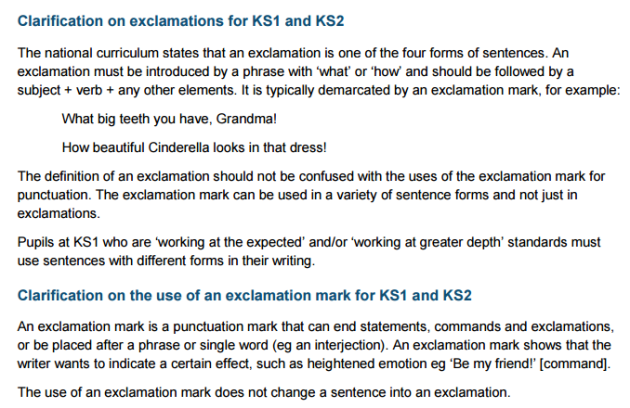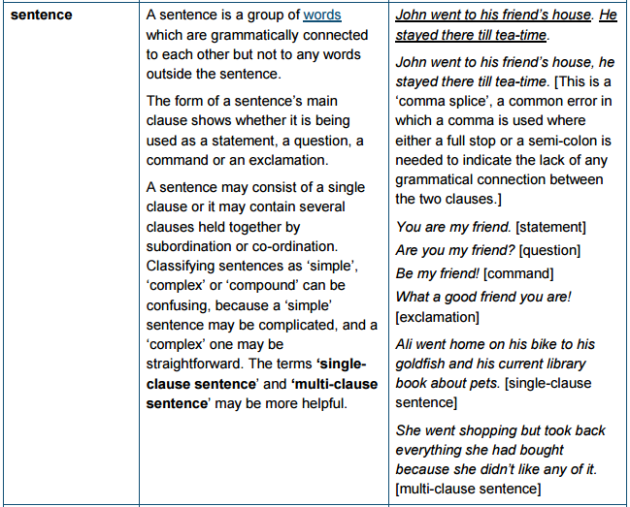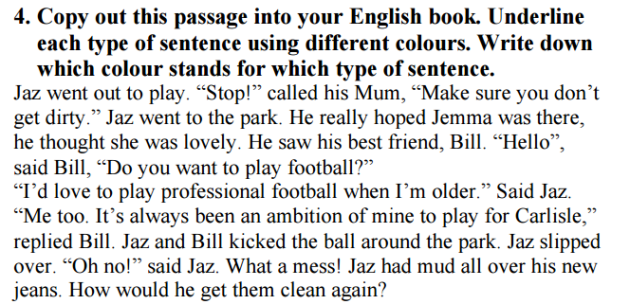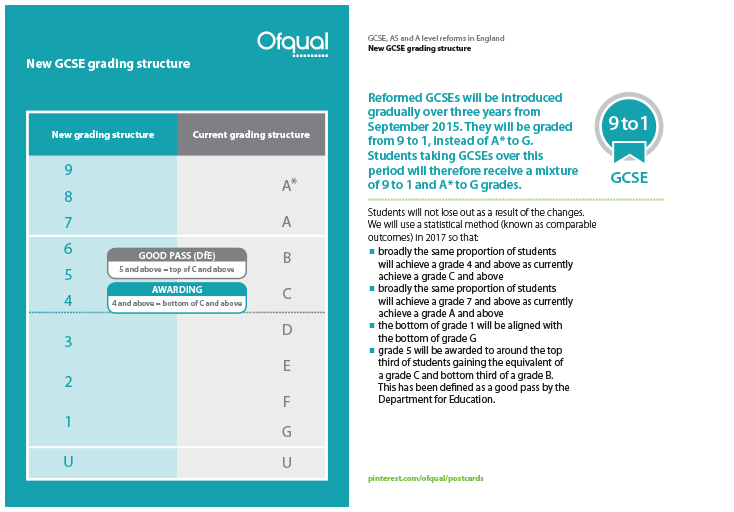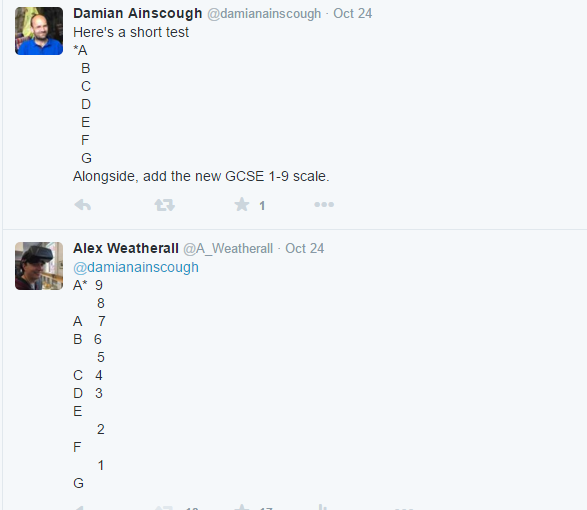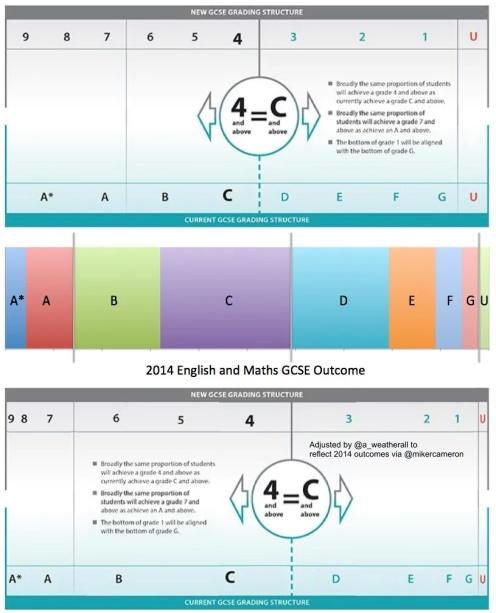The sins of the father…
July 29, 2016 4 Comments
Today, a story was released in the Daily Mail (I will not be linking as I am not a fan, but will attempt to paraphrase fairly) about a letter received by a parent regarding a debt owed for school dinners.
The article explained that the parent had received a letter (later shared online by @richardA from the Guardian amongst others – see below) that explained they were late to make payment of £75 for school dinners by one week, and that if the arrears weren’t paid by the following week the school would take action.
The action to be taken was this: as from the following Monday, the child would be placed into lunch isolation. They would receive a sandwich and a piece of fruit only. They would spend the entire 60 minutes in isolation. Only when the amount was paid back in full would they be allowed into family lunch with their classmates.
Now, the article went on to say that the parent had paid the money and the child had still received isolation the following week. The head teacher was quoted as saying that the child had been put into isolation for a separate incident (as it turns out, for misbehaviour at the bus stop).
That is pretty much the story and it has caused quite a little furore today, both below the article in the Daily Mail (as most articles in the Daily Mail are designed to do) and online, on both Twitter and Facebook.
I think it’s fair to say that there are elements to this story that shouldn’t be taken at face value:
- why would a parent contact the Daily Mail about this unless to kick up a fuss; were there underlying issues with the relationship between the parent and the school?
- the school in question is always in the news for being a free school, a school that espouses “no excuses” as a behaviour policy, a school run by a head teacher who has been held up by political parties as either being a saviour of education or someone not to be lauded at all.
- the letter appears to have been sent to many parents (it is addressed: Dear Families), but the details are specific to the parent in question with regards to date, amount owed and consequences.
I have two comments to make about the letter (not the article) which was shared:
- The first thing I noticed was that the letter was written poorly. It had capitalised “Sandwich” and “Faithfully” and the word “overdue” was written both correctly as a single word, and incorrectly as two. Am I being unkind when I say that this shouldn’t be the standard of a letter sent out to multiple families about a debt payment?
- The second thing was the aspect of the letter that seemed to cause the most concern with others. Why on earth were children of parents being punished by being placed into isolation for the parent’s inability or even unwillingness to pay for 6 weeks of lunch up front? The school was out of pocket by £15 by the time the letter was sent. Also why was there no indication in the letter that the school was willing to discuss alternative methods of payment for those who might be having financial difficulties. Remember this was addressed to ‘Families’, with ‘Yours faithfully’ as a sign off; a generic letter to all who had not yet made payment.
Here is the letter for reference via this tweet from @richardA
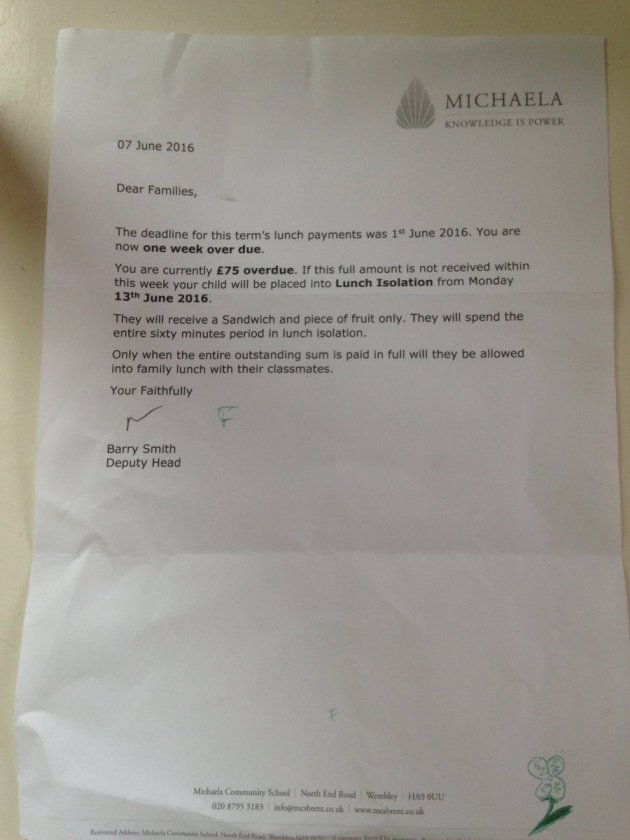
So back to the furore. Comments were made about the fact it was this particular school and its “no excuses” ethos that was the problem and that parents should know the rules and follow them. But here was a parent whose son had just joined the school a couple of weeks before, being pulled up and the child threatened with isolation.
Of course there is more to the story; Tom Bennett posted in his blog a full and frank explanation of the back story from the head teacher. I would link, but in my opinion the information shared by the head teacher should not have been posted in the public domain as it contains detailed information on the educational attainment of the child, former behaviour, history at other schools and details about the parent such as financial difficulties and their behaviour and I am concerned it identifies too much personal information about the already named child. It was clearly the reply to the journalist at the Mail and even they only published a small portion of the information. UPDATE: I’ve just read a tweet by another journalist Alice Woolley saying their lawyers would have been unlikely to sign off publishing full content of email from the head.
Suffice it to say, there is history between the school and the parent already and this incident was only part of the story. But in my opinion the school failed to do the right thing here on three points:
- The head teacher explained in her email to the journalist that the letter was intended to bring the issue of non-payment by the parent to a head. This implies that the letter was intended to be sent to the parent directly. In that case it should have been addressed appropriately so there was no avoidance of doubt.
To suggest this was being sent to more families was potentially misleading. - Citizens Advice has the following to say in categorising harassment by creditors:
- putting pressure on you to pay all the money off, or in larger instalments when you can’t afford to;
- trying to embarrass you in public;
- telling someone else about your debts or using another person to pass on messages, such as a neighbour or family member;
- The money was asked for in full; the pressure being that the child would be kept in isolation for an hour each day until the the payment was made.
- The embarrassment in public was by proxy: a child would be removed from the normal lunch sessions and kept in isolation. This would have been public in the school as the classmates would have been aware of the situation; remember this isolation was not intended to be due to the poor behaviour of the child.
- Telling someone else about your debts; tricky one here – most children are aware if their parents have or have not made payment for something at school and most schools will communicate a debt via the child in the first instance; however it would have been made abundantly clear to the child, that the parent owed money to the school, due to the threatened isolation.
I would argue that all of the above apply to the letter sent:
- My final comment is regarding the principle of punishment of one person for another person’s behaviour. The head teacher wrote in her email to the journalist that the child had made great improvements in the short time at the school (just four weeks). They had no problems with him: no fights, quick improvements to academic attainment and a child happy at the school. The problem, she said, was entirely with the parent. So why on earth would the school impose a punishment upon the child – by isolating them for an hour each day (during the social time in school) – for the debts and behaviour of the parent? This is not on. A child can (and should) be held responsible for their own behaviour in school; they are not responsible for the behaviour of their parents.
Even Deuteronomy had figured that last point out.
If you’re desperate for the links to the Daily Mail and Tom’s post I’ll put them up, but I’m assuming anyone reading this is aware of the story.
